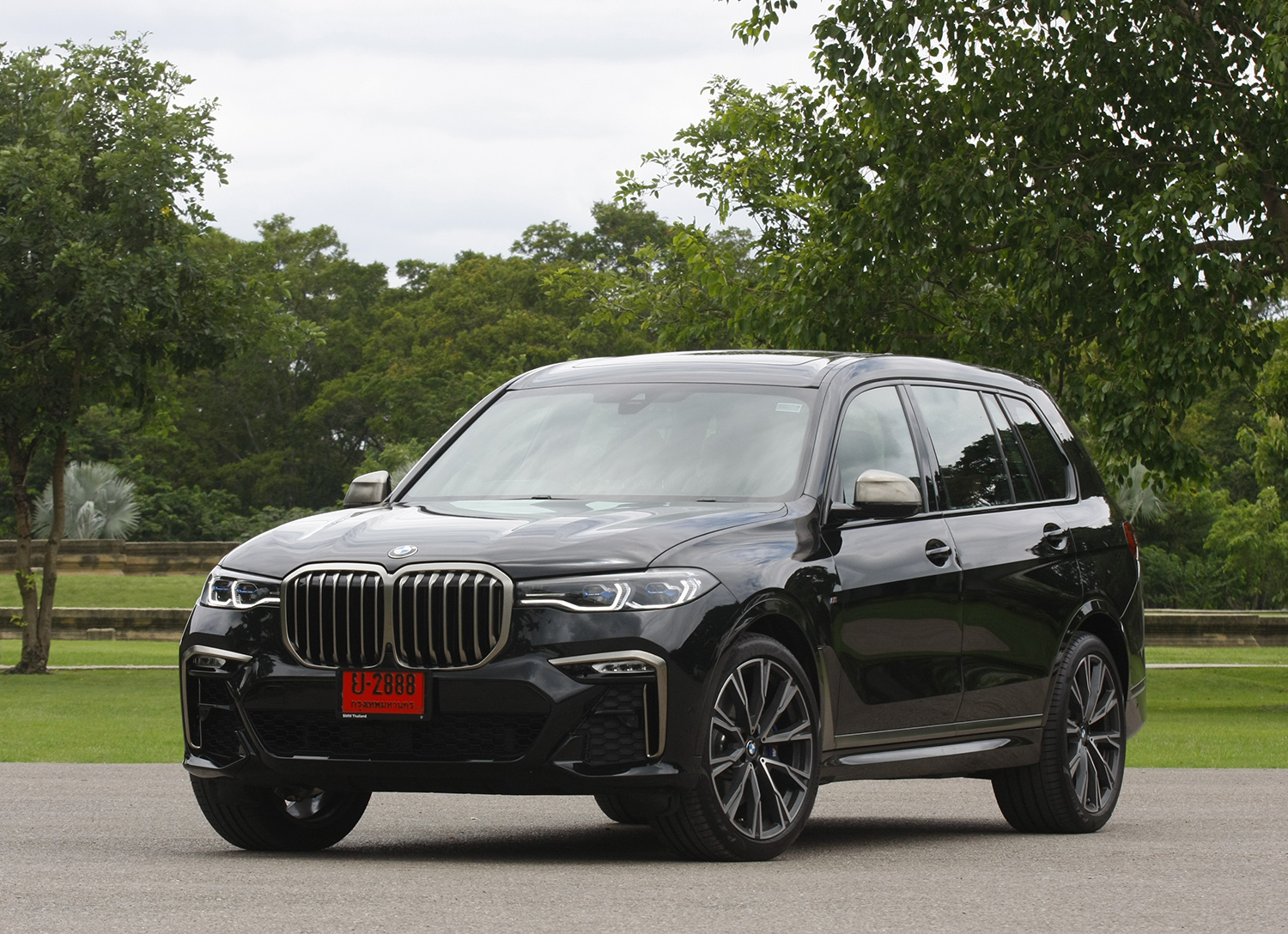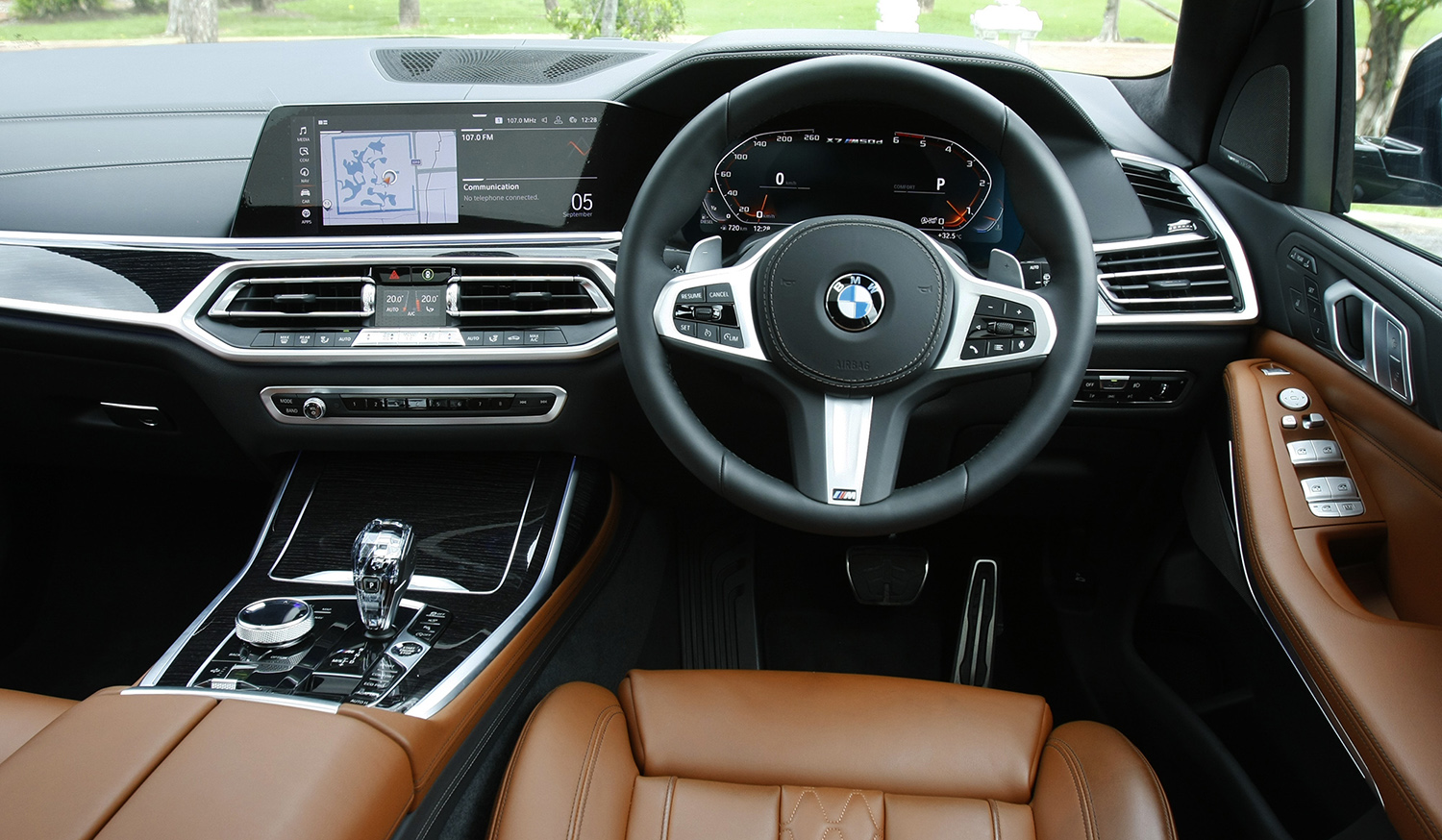BMW’s huge X7 may be unnecessary for many big wallets, but it’s match for some other brand-rich marques.

There’s usually a sensitive threshold among Thai car buyers when it comes to pricing of mass-market nameplates.
If anything budges two million baht, it’s better to go European for something like Mercedes-Benz or BMW.
But these two German luxury marques also have their limitations when moving up the price ranks. They say if any kind of money can buy a Porsche, that’s the deal.

So what gives BMW a good reason to sell the X7 flagship SUV in Thailand when it costs nearly 10 million baht, an amount enough to get a well-appointed Cayenne or Range Rover?
Brand image aside and speaking in purely objective terms, there’s something to like about the X7 which isn’t available in those two aforementioned rivals: three-row interior with seven proper seats.

Actually, BMW isn’t the first to sell such a full-size seven-seat SUV here. Mercedes-Benz has been selling the GLS (the GLE is more like a 5+2) for quite some time appealing to a niche and is readying an all-new replacement in the coming months. Lexus has the LX (a rebadged Toyota Land Cruiser) but only takes orders of the aging giant SUV on an individual basis.
That said, the X7 is a fresh choice at the moment for luxury car buyers needing more seats than what a two-row Porsche or Range Rover can offer. That also includes advantages of cargo space and versatility thanks to the X7 being considerably longer in wheelbase and overall length.

Range Rover has been quick in responding to customers’ needs by offering a long wheelbase version with highly cossetting rear seats for chauffeur-driven owners. Although the X7’s middle-row chairs aren’t as sumptuous, they are still good enough to be cajoled in when you’re not driving thanks to some seating adjustments usually reserved for top-end sedans like the 7 Series.
Since the X7 is BMW’s most expensive SUV, there’s no shortage of convenience items. The second and third rows of seats can fold down and be drawn up via electric buttons, while the doors have soft-shut operation.

To ensure buyers their money is well-spent, the X7 is trimmed with materials that feel just as upmarket as in those brand-rich competitors. The number of features made standard in the X7 is equally numerous, be it on the safety or convenience side of things. A suite of driver-assist technologies also feature in the X7.
Because the X7 is larger than the already-big X5, there’s no question about its cumbersome size on Thai roads. Actually, we could spare you the time and suggest that if you don’t need a super-big interior for seven, the X5 is the limit and all you need.

When we first drove the X7 at the international driving trials in the US earlier this year, immediate highlights on the move included smooth ride and well-muted cabin.
In other words, the level of cruising refinement is excellent to possibly even topple that Porsche or Range Rover. These attributes remain intact with the Thai-spec X7.
You just have to be sure that you’re fine with driving the X7. That’s because it feels very big at all times even if the steering is geared in a way to make driving as intuitive as possible. The X7 suitably comes with air suspension that can be raised or lowered wherever permissible.

It’s here and now that you might start to cherish some of those driving aids like parking assist, all-round view monitor or blind-spot warning. As the X7 is a relatively new Bimmer, it also gains the latest in infotainment and user-experience tech.
What we didn’t sample back then was the X7’s diesel engine in M50d guise. Unsurprisingly, the M50d is probably the best option due to the advantageous torque factor of diesel dealing with a shebang tipping the scales at nearly 2.5 tonnes.
Of course, the six- (40i) and eight-cylinder (50i and M50i) petrol variants we tested offer plenty of power at all times, but they don’t pick up power in the mid-ranges as effortlessly as in the M50d.
This 400hp four-turbo straight-six is one of the best performance diesels on sale in the market at the moment, another one being that superb 435hp V8 unit in the Bentley Bentayga costing twice as much as the X7 in price.

Sure, there’s the 265hp 30d to not only lock horns with the pending GLS350d but also lower the X7’s price point in Thailand. But if a posh SUV is going to cost already this much, it might as well just be better to go for a true match: X7 M50d.
The X7’s highly tractable performance also makes it better to drive overall than the Range Rover (a V8 diesel goes for 16 million baht, unlike the plug-in hybrid costing nearly half), if not as agile or fun as the Cayenne.

So, in one way or the other, luxury SUV punters who think that a Porsche is always the one could take a look at the X7 because driving doesn’t always matter in vehicles like this.
The levels of comfort and refinement clearly shows that BMW has been willing to sacrifice some driving pedigree (like in today’s 7 Series) because that’s what buyers want, especially when it comes to SUVs. Like how we once billed the GLS as an S-Class on stilts, the same could be said for what the X7 is to the 7 Series.
Naturally, the X7 won’t become a crucial seller for BMW in markets outside China, Middle East and US. But it’s probably going to define how all of BMW’s other SUVs will turn out in the future.

